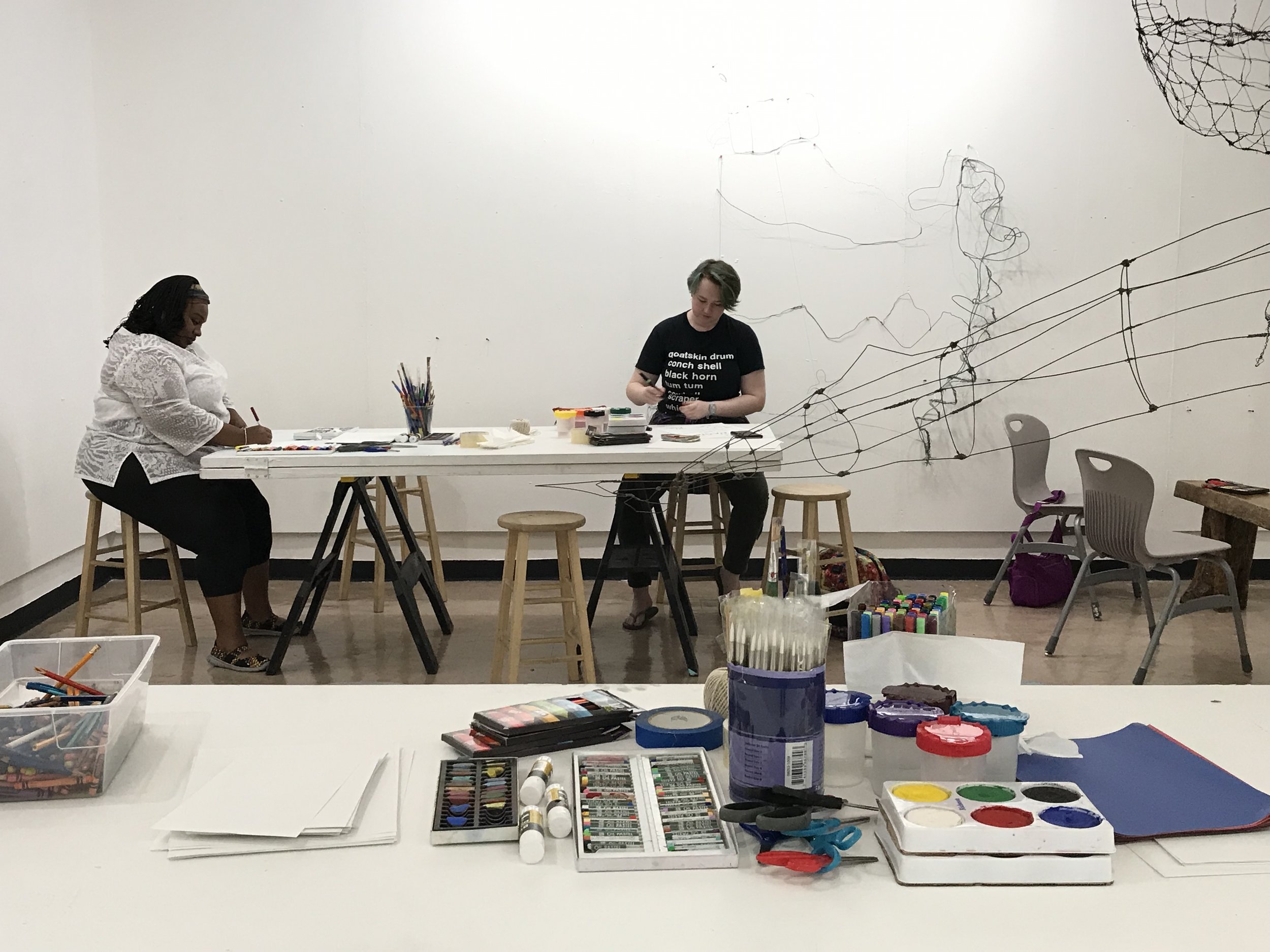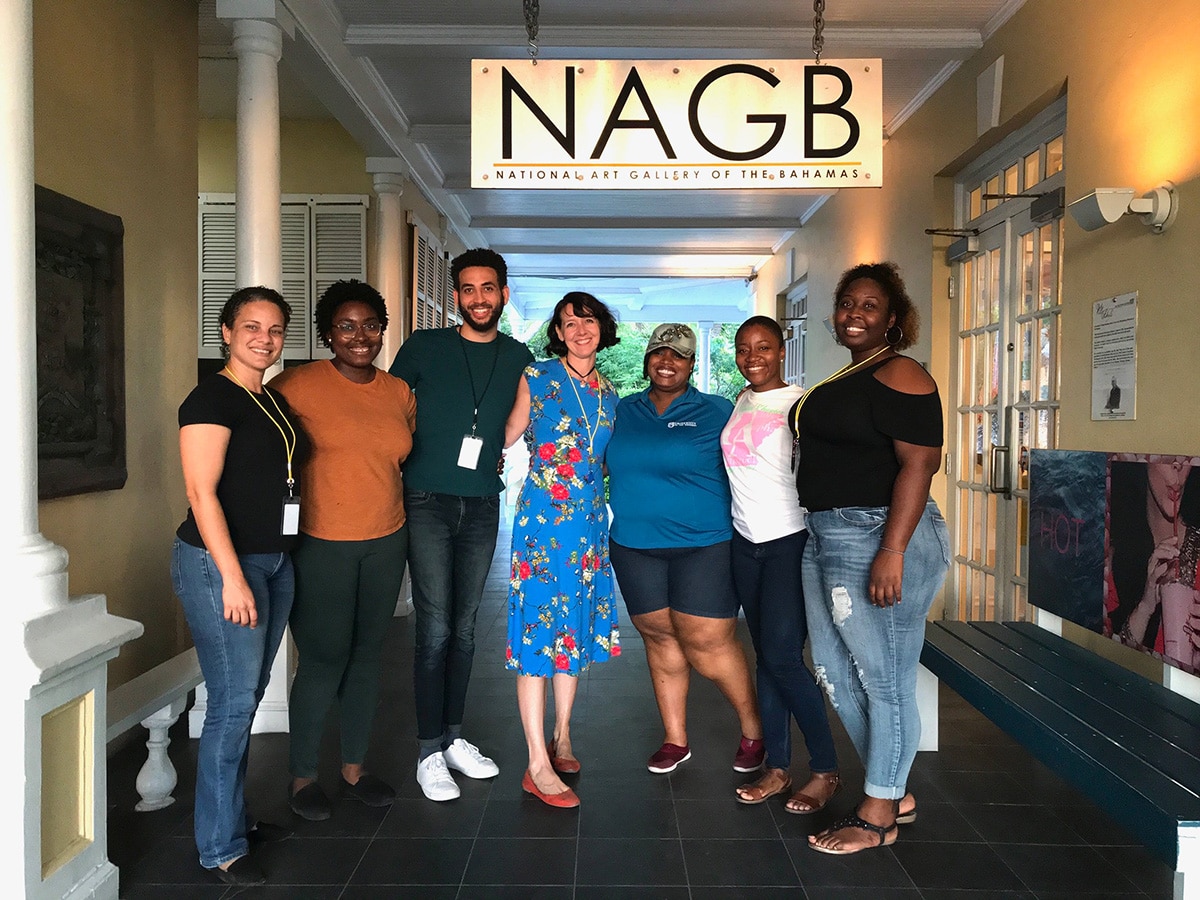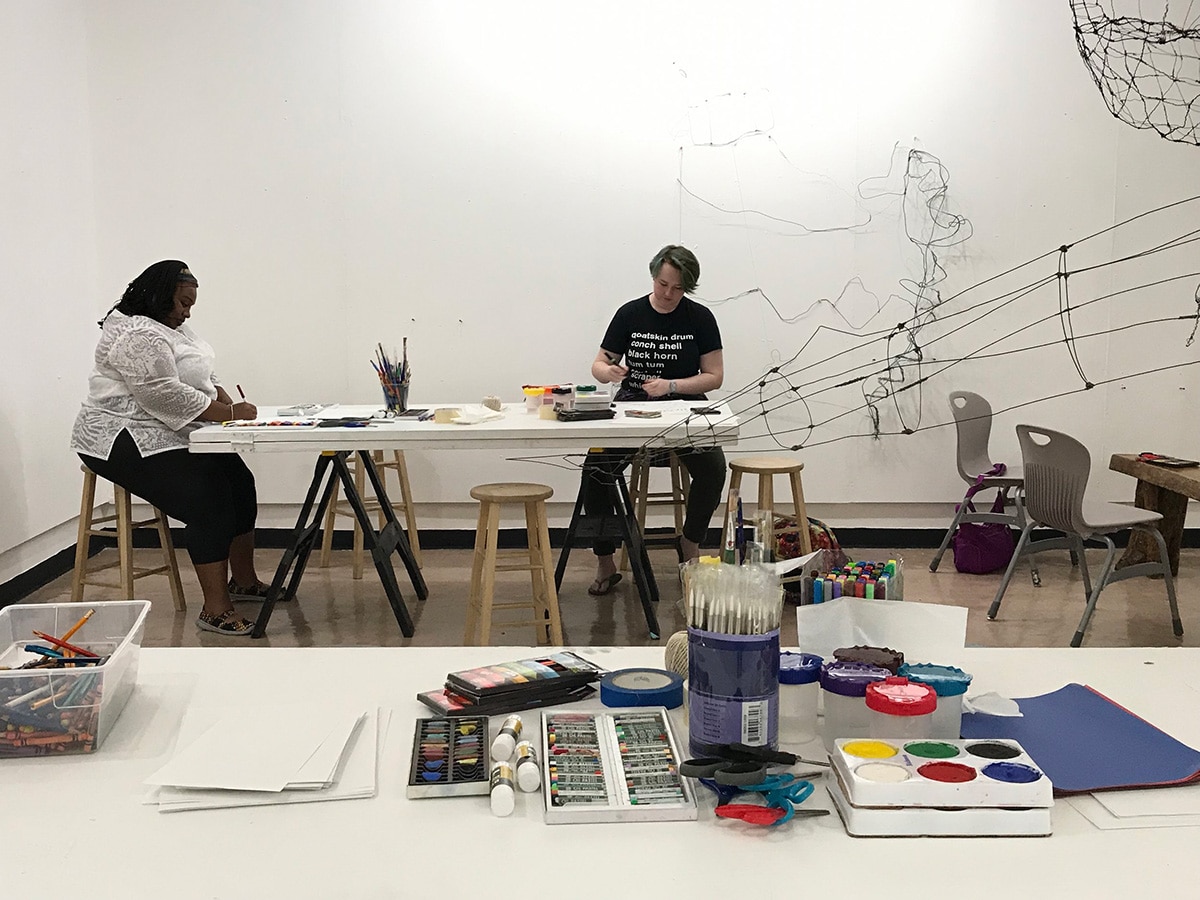
Exploring art materials with therapeutic thinking.
By Zearier E. Munroe
Dorian was the most unnatural of natural disasters to batter this country. The hardest hit islands of Abaco and Grand Bahama will be recovering for years, but they won’t have to do it alone. In the days and weeks following the storm, the power of community and the outpouring of financial, emotional and spiritual support for those affected has been the very epitome of “Bahamas Strong.” And, in this moment of physical and emotional turmoil, the value of a safe space cannot be calculated.
Understanding this, the education team at The National Art Gallery of The Bahamas (NAGB) partnered with the incomparable Art Psychotherapist, Susan Moir Mackay, a former resident of Grand Bahama for twenty years. The result of this partnership was Create Space under NAGB’s We Gatchu!: Sanctuary After The Storm initiative. The aim of Create Space was to designate and design areas where participants could explore art materials in a therapeutic way. We prioritised the creation of this space within the shelters, while we reaffirmed the availability of the NAGB property as a haven for all who are in need. As it has long been the mission of the NAGB to use the sanctuary of its halls to uplift and inspire through art.

Susan Moir Mackay, The NAGB Education Team and some of the Create Space Assistant Volunteers. Image courtesy of Jackson Petit.
Art in any form is an expressive medium; art is for the soul. It offers its user opportunities for self-discovery, self-awareness and self-expression. The visual arts, in particular, allow for the introspection and healing needed when one experiences trauma, like a natural disaster. Thus, the decision to offer art as therapy at the NAGB was one that made sense for us and for the country. The education team, Susan, and the volunteers packed our supply kit and began our mission. We started with an intense orientation, to work in these environments and with persons affected by the storm. This training focused on ethics, the principles of art therapy and the skills needed to hold space and contain whatever is within it.
The program then ran for three concentrated weeks. An average of three spaces were created per week. Two to three at shelters and one at the museum. Participants were asked to explore the art materials in their own way, with the volunteers using therapeutic thinking to navigate that experience with them. What that experience looked like varied from place to place. Sometimes it meant still silences as participants worked with unshakeable concentration. Other times that meant the process of creation was loud and fluid. Sometimes it meant drawing, sometimes it meant colours, sometimes it meant an alternative use of the traditional materials through folding, sculpting and new combinations.
In any case, the goal was to help with the containing of whatever was being felt in the room, in a space where they could feel free to talk or be still. The result was certainly a worthwhile experience for the participants and an experience of learning and growth for the volunteers.
As a volunteer of Create Space and a member of the education department at the NAGB, I feel like I have been given the tools to show up for others in a healthy way. The skills I have learnt and the experiences I have gained, I can now take with me and incorporate them into the outreach programs in my purview. The greatest impact of Create Space perhaps is in what it has made possible for us to do moving forward. Create Space will continue in a new format as it can now be folded into programming we have already been executing.

Two Create Space Volunteers at The University of The Bahamas Preparing for participants to arrive. Image courtesy of Blake Fox.
Our ArtWise school visit programme will incorporate therapeutic thinking, using art as therapy particularly in those schools where there is an influx of children from the affected islands. The principles and skills from the Create Spaceinitiative will also be used in other education programs from teacher workshops to the Inter-Island Traveling Exhibition (ITE) to the Mural Programme.
We are grateful to have been given the opportunity to make a positive impact on others using art as therapy. We look forward to continuing our important work of public education on the relevance and importance of art to the health and development of our country. Moreover, I am happy that at my place of employment I can work in a socially conscious way. As a national institution, the NAGB is doing the work. We understand the importance for us to serve and be of service to our nation in this difficult time. Because, as I said, none of us will have to do this alone. ‘We Gatchu!’